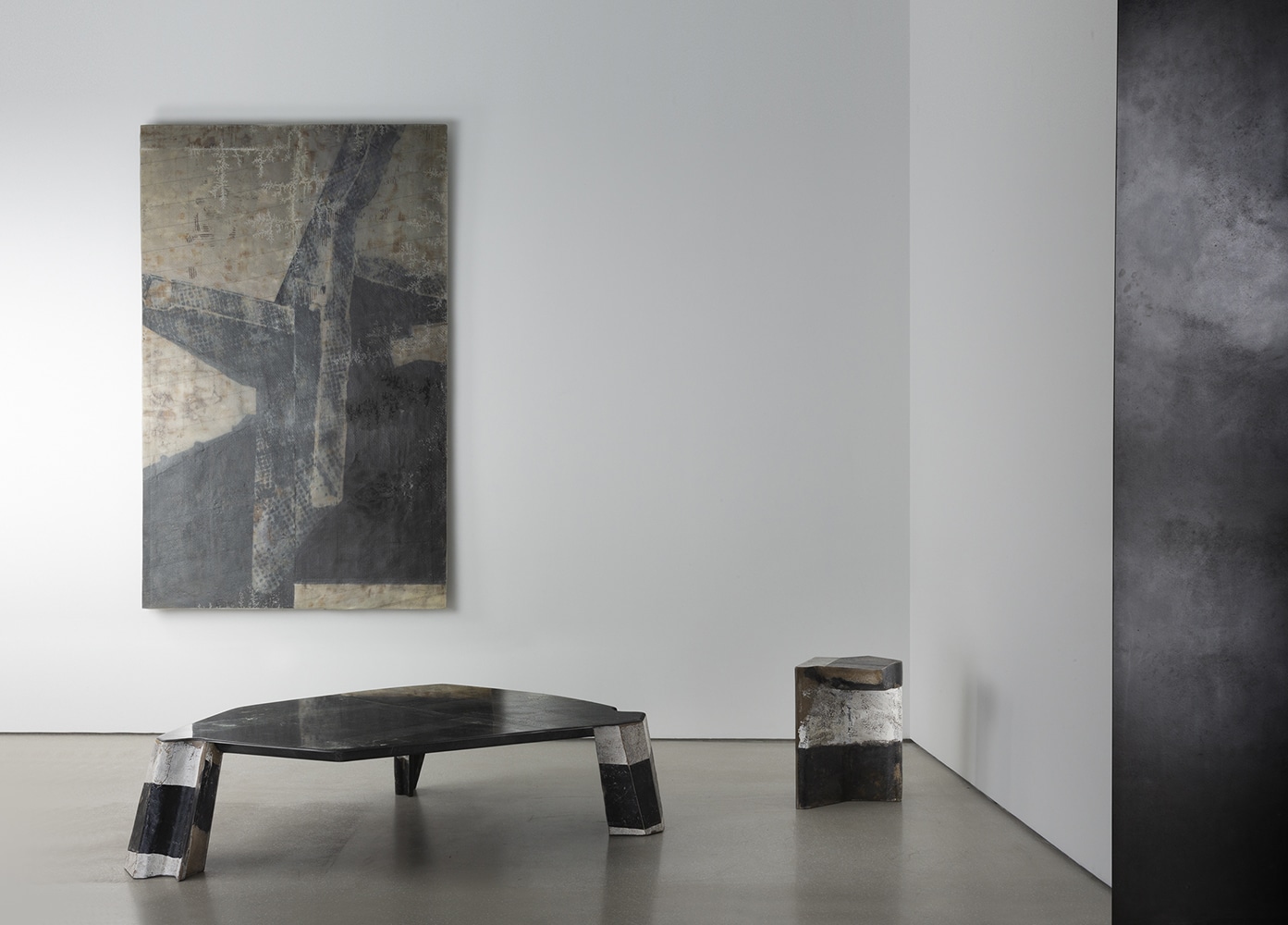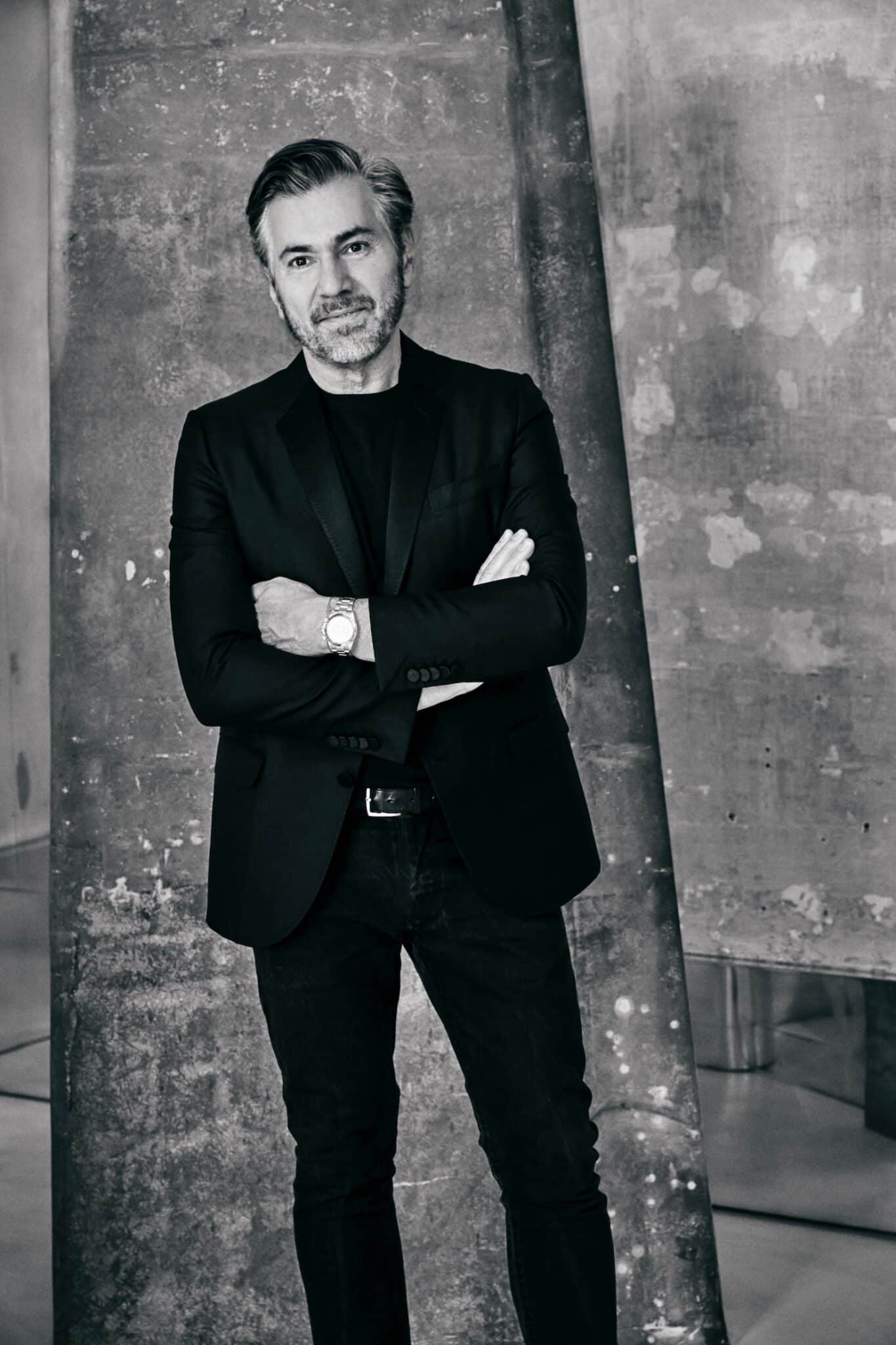
Vincenzo De Cotiis

The Architect
Vincenzo De Cotiis was born in 1958 in Gonzaga, Italy. He studied architecture at the Politecnico di Milano and founded his studio in Milan where he lives and works. His work represents a winding path that often doubles back upon itself, one fuelled by parallelisms of space and time, cultural layerings, and quantum leaps. A process imperceptible to reason and intellect, yet manifested through the materiality of his countless works.
The Artist
Vincenzo De Cotiis speaks of the impelling need to seek new manifestations that can conflate archaic idioms with futuristic expressions. His creations are born out of an assembly of recovered materials and reflective, futuristic surfaces and appear evocative in their final form. A form of art and design that is not replicable. Selected pieces are available through the artist’s gallery in Milan, Carpenters Workshop Gallery, and at leading global art and design fairs such as Art Basel, Art Paris, Design Miami / Basel, Dubai Design Week, FIAC, Frieze, FOG, PAD London, TEFAF Maastricht, TEFAF New York, The Armory Show, and Zona Maco. In 2019 Vincenzo De Cotiis’s work was presented at the Museo Franz Mayer, Mexico City, and at the Ca’ d’Oro on the occasion of the Venice Biennale.
1. You have such an impressive and multi-faceted career in architecture, interior design, and sculptural design. Could you tell us when and how it all started? Perhaps you can share your first memory related to the art world.
I have had an insatiable curiosity for art and aesthetics ever since childhood, creating objects from whatever I could find and always painting and drawing. I think this is how my eye for aesthetics developed. I couldn’t tolerate a misarranged table setting or colors in a room that clashed.
2. What led you to the creation of design?
Before I began to create anything, I spent a long time learning, looking, reading, studying, exposing myself to novelty, and understanding the concepts and crafts behind human-made objects of beauty. Understanding humanity is essential if you want to understand art, since nature’s beauty is vast, awe-inspiring, and chaotic, but human beauty can be traced through history, understood in conscious terms, and studied as an emotional and intellectual pursuit. In all this time of learning, I was also drawing, since I have been sketching all my life. Eventually, the only viable path was to begin manifesting this knowledge in reality, which for me was through artworks with intense materiality.
3. How would you describe your creative process and its influences?
My process is based on research and studying the nuances of visual languages. In the same way that spoken languages differ around the globe, so too have visual, and artistic languages diverged in wildly different ways, and it is my great joy to study them to understand the semantic differences and references between them. I’m influenced by many cultures around the world, for instance, I have been fortunate to learn much about Japanese Architecture and traditions, and I am grateful for the wealth of beauty and history in my home country Italy.
4. The idea of timelessness frequently appears in your work. What are the ways you try to achieve that in your practice? How do you choose your materials?
Time and timelessness are some of the deepest considerations in my work. I approach the concept from many different perspectives, exploring time as linear, as a spectrum, and also as a landscape full of singularities where it collapses in on itself.
There is an eternal quality to human consciousness, some part of us that resonates with past and future lives. People tend to picture time in a cosmic sense, starting with a big bang etc, but I feel that journeying inside ourselves and exploring deeper and deeper levels of our subconscious also results in a certain time-travel, more like a regression.
We have ways of accessing something greater than ourselves through art, and conversing with materials can trigger these responses. Rare stones offer a direct link to the past, as they are millennia old, or fiberglass can signify contemporary human creation. I use a full material spectrum in my work to create temporal juxtapositions.
5. Would you say that there has been a defining moment in your career? Could you tell us about it?
When I first presented my work in the US, which was at Design Miami, I could sense my artistic expression was understood. I feel I have often been misunderstood in my own environment, as in Italy we are very attached to expressions that have little to do with contemporaneity. Our cultural heritage is our great strength, but also a limitation, whereas the American critique is meritocratic and open to the contemporary.
6. What would be the ideal place to design for you?
There is no ideal place for design because there is no ideal place for drawing; it’s simply available to you everywhere. The desire to create always chases me, so I have to first capture it on paper wherever I am or else it begins to bother me. Beyond this, I always follow my materials when I’m working, so it helps to be in my workshop.
7. Is there a design object you could not live without?
It may sound trivial, but my phone. I rarely use it and only in the most basic way, but it is a constant representation of the future and provides many flashes of inspiration. More totally, however, I couldn’t live without my books.
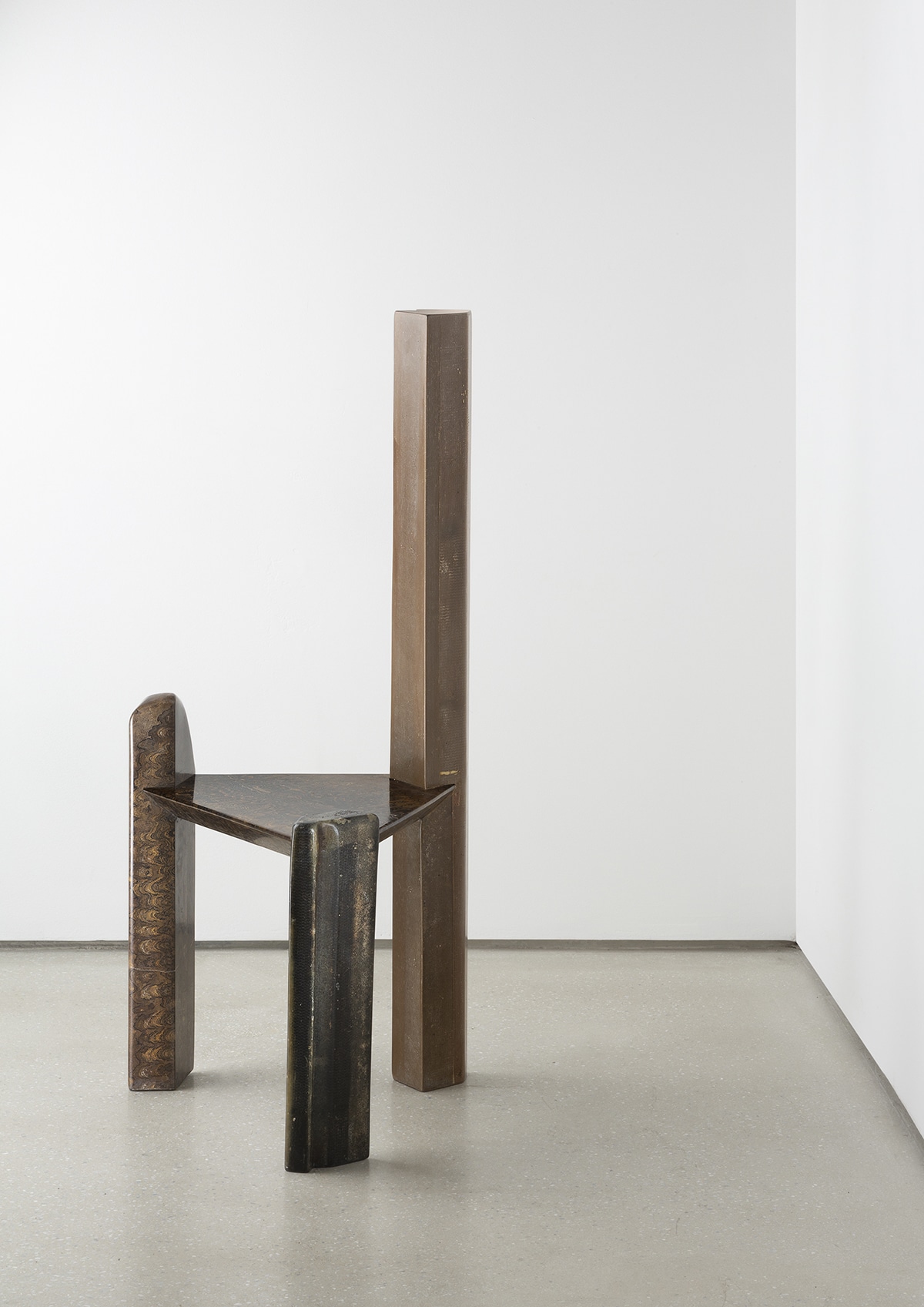
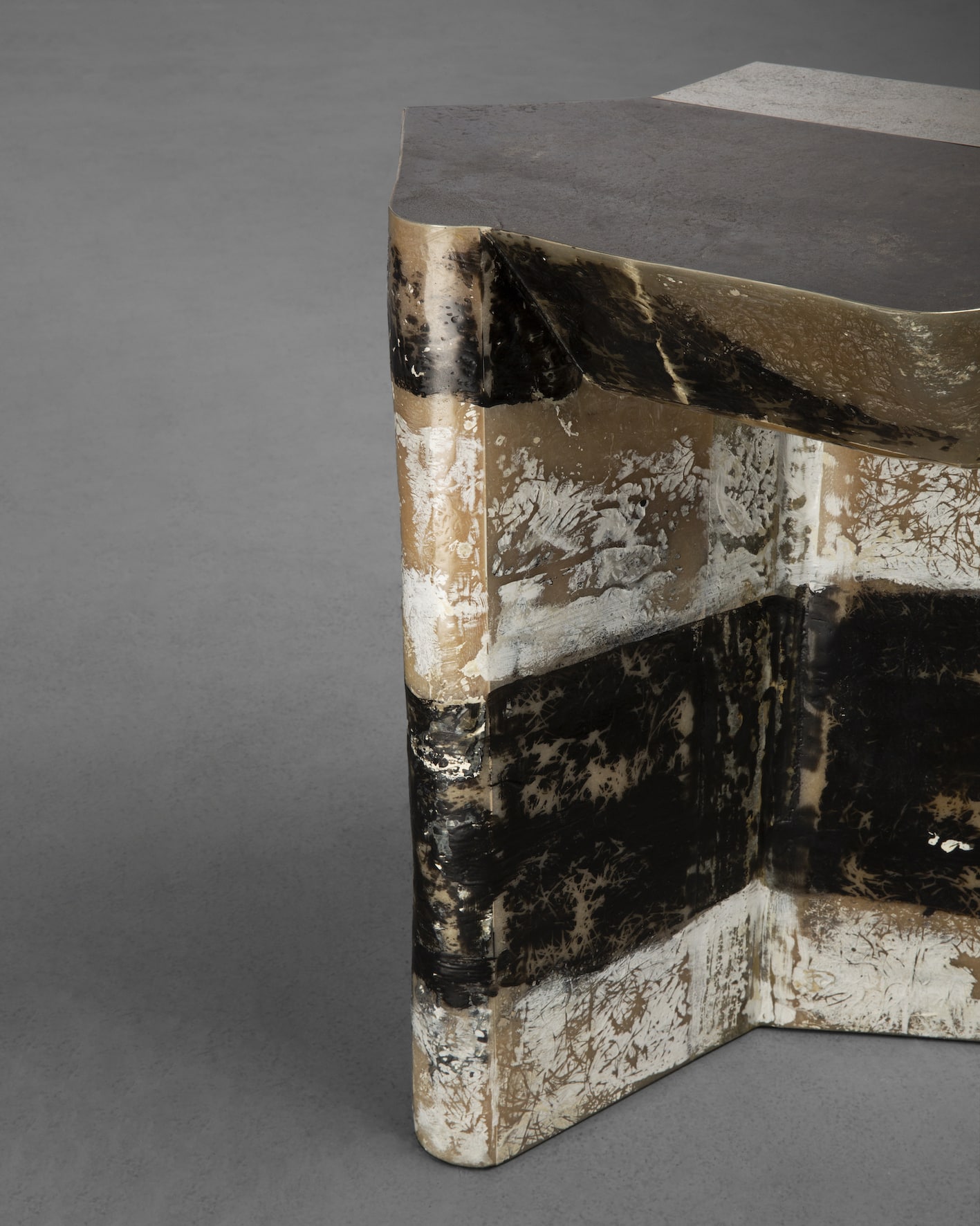
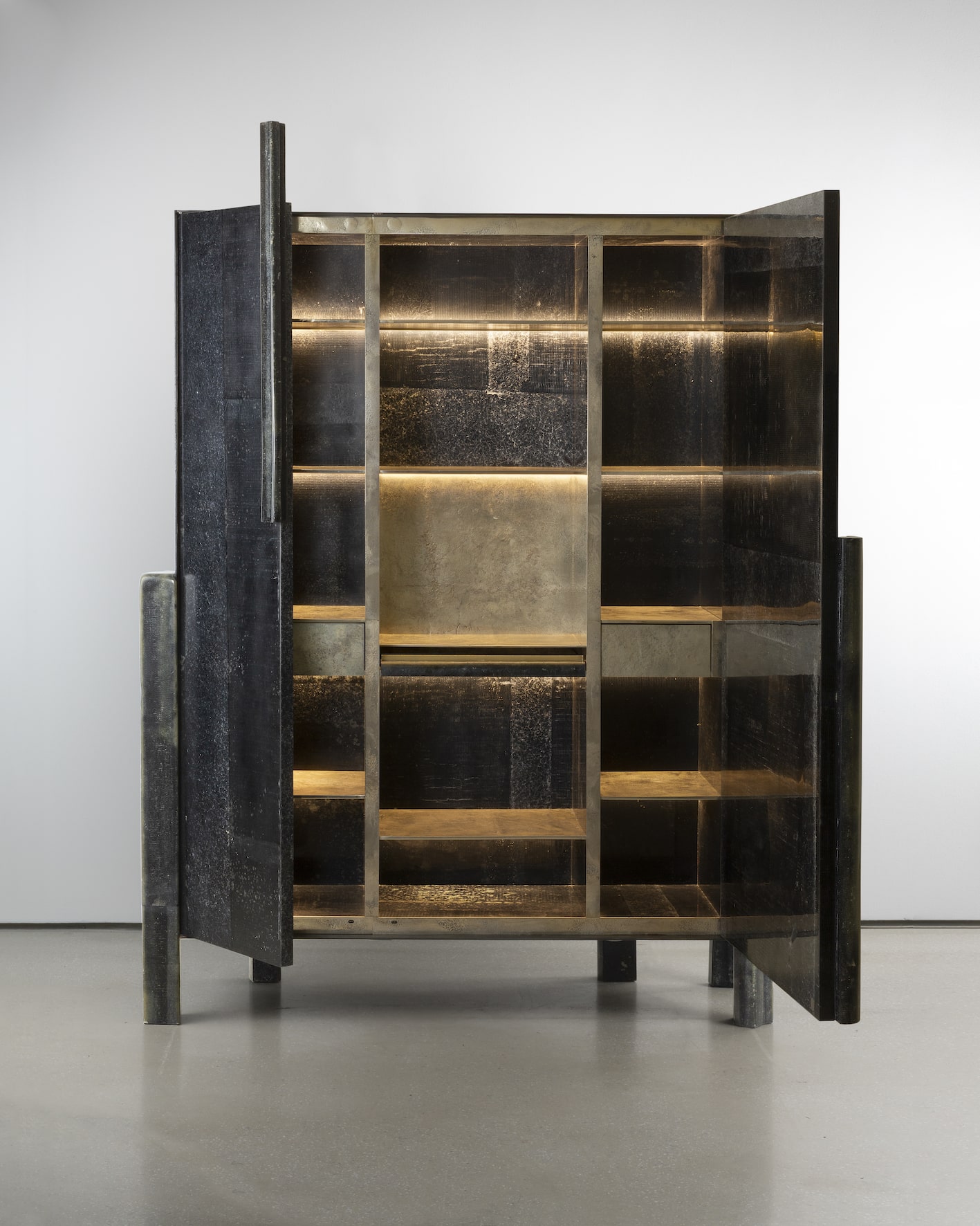
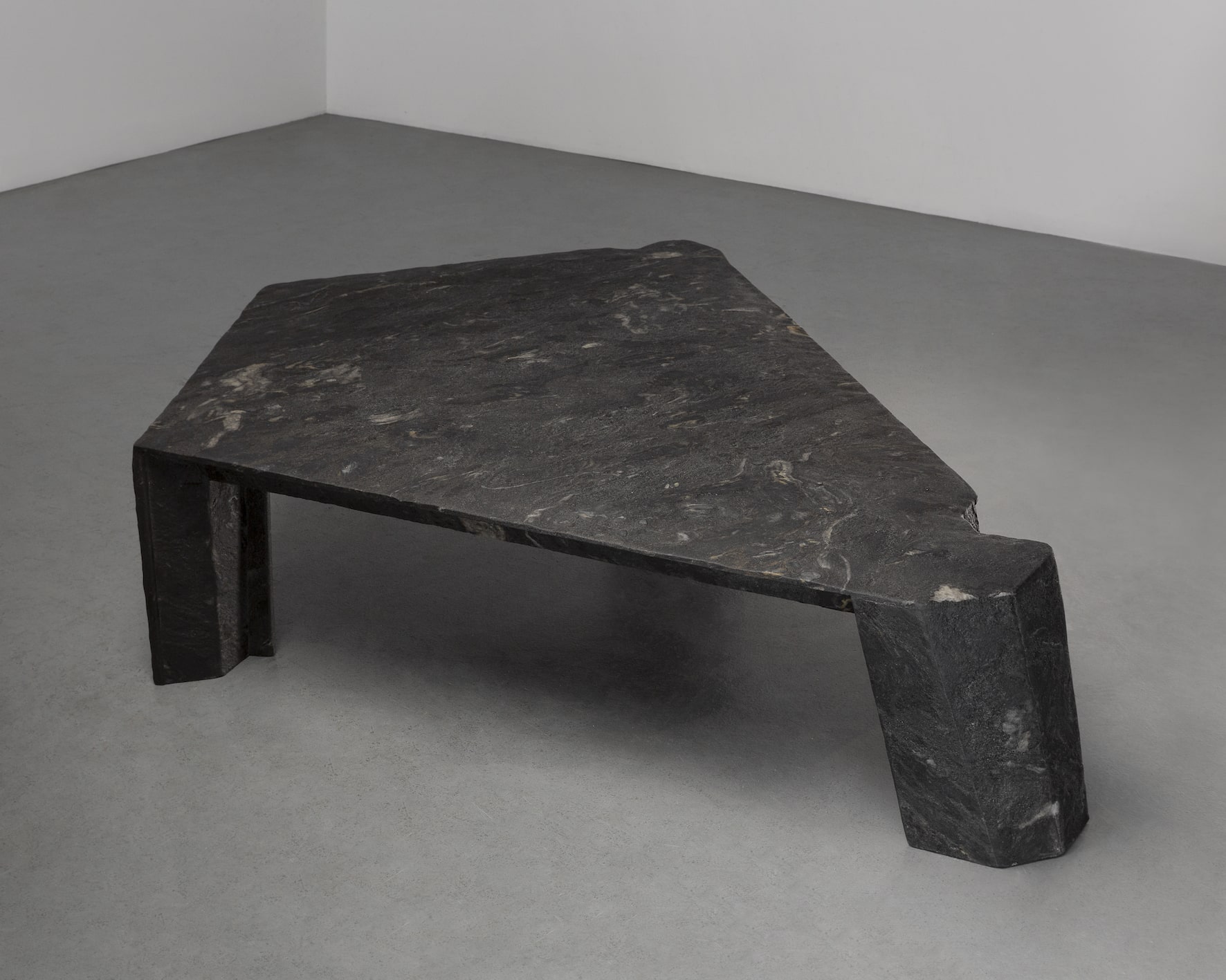
8. What was one of the hardest-learned lessons in your practice?
How to engage with criticism. It is generally constructive, but often annoying. Over the years I learned that good criticism doesn’t have to be negative, but ironically I have since become my own harshest judge.
9. What advice could you give to beginning artists who would like to create sculptural design works?
You have to understand yourself before you begin to give form and life to an external object. Conversing with an artwork, especially a sculptural 3-three-dimensional object, can form a debate, with give and take between you and the object. However, when it’s something you have created yourself, the debate becomes internalized, more like an argument with a self-portrait. It takes a huge amount of honesty, consideration, and patience to be able to find answers to the questions this object is inevitably going to demand of you. I constantly question myself, which is the only way to eventually build consistency in my thoughts and practice.
It’s not an easy path, but I also suggest that young artists be recognizable. I’ve always sought this from the beginning.
10. If your works had to belong to a design movement, which one would you define it in?
Defining my work in terms of movements or schools is not something I’m interested in. There are flavors of antidesign in my work, as I obviously grew up very aware of Italy’s antidesign movement, but it was never my intention to align myself with it and any association there is retrospective. However, my work will always respond to radical forms of expression, as well as with architectural theory. I’m more inspired by artistic movements, as you can see in my series En Plein Air or Pop Nouveau and Baroquisme, which I feel have more interesting concepts that fuel them.
11. What designers have influenced you?
Japanese architecture has been an area of particular study. Also, Brutalism, which has become part of my being. I cannot cite one designer in particular, but masters like Le Corbusier, Alvar Aalto, or Mangiarotti have always inspired me as I pursue artistic inspiration.
12. Which contemporary designers do you appreciate?
Wendell Castle and Roger Herman spring to mind, in both cases because of the force of their personal creative visions and their utter conviction in the power of experimentation. Sterling Ruby, whom I am an avid fan of, and also artists of the German avant-garde like Anne Imhof.
13. If you had to summarize your creations in one word or sentence, what would it be?
Archaeology of Consciousness. Because I am a man of the past, projected into the future.
14. Do you have any books/programs/podcasts to recommend to our readers?
I am omnivorous when it comes to books on art, architecture, and design. I would recommend others to be the same. Never preclude anything from your life without trying it first. I would also recommend learning from a naturalistic program, because nature has always given me great inspiration. And then read, read, read. Never settle for mere factual knowledge, but follow everything in the world and want to understand the links between it all.
